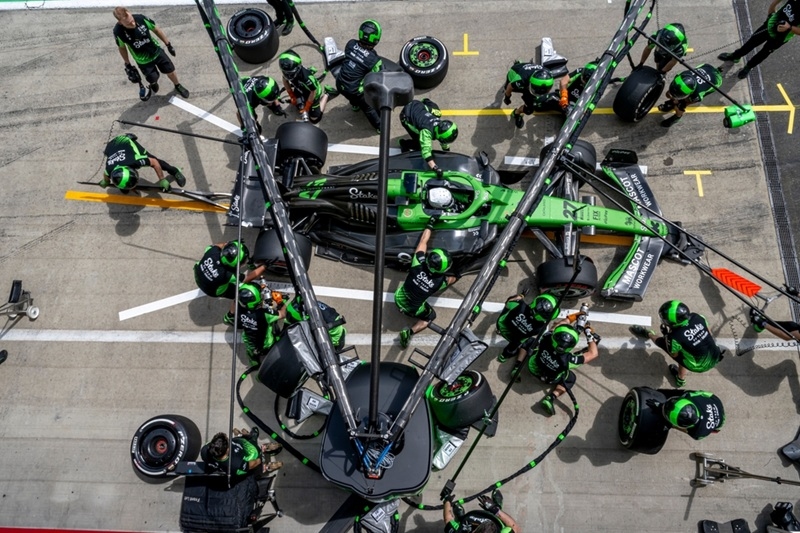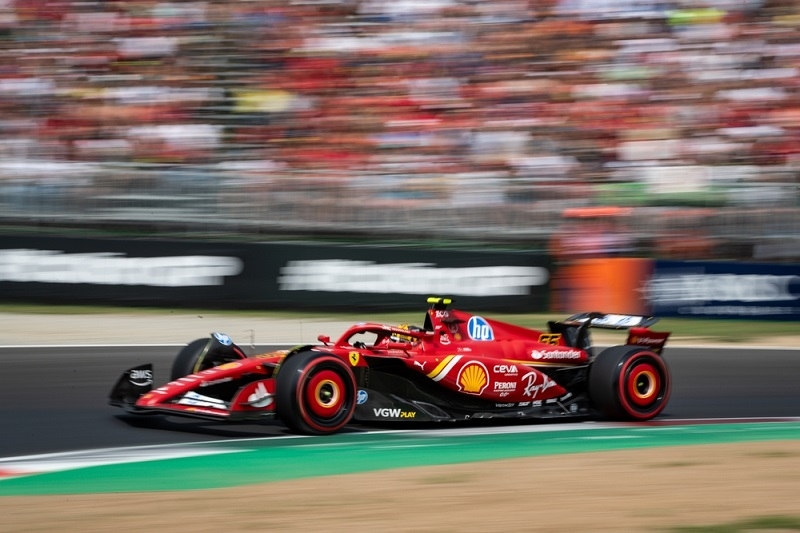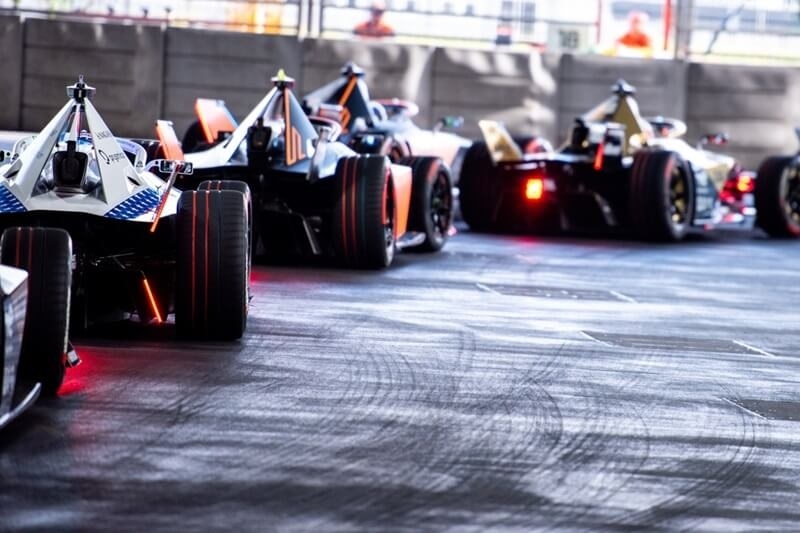What's New for 2025 For All Tech Innovations in The Formula1

Formula 1 continues to adapt and evolve as a high-tech sport blending engineering genius, precision strategy, and raw physicality on the world stage. The 2025 season is no different, with new regulations and new racing technology arriving on the scene. With the FIA promoting sustainability, equity, and improved safety, as we are yet again embarking on yet another new era in the sport, these updates show teams looking to embed lots of the latest mechanical, electronic, and aerodynamic gains into their race strategies.
Mandatory Driver Cooling Systems
The key changes in the 2025 F1 regs highlight driver safety in extreme temperatures. After two races recently had drivers visually struggling with heat exhaustion, most notably the 2023 Qatar GP where cockpit temperatures soared above 50°C the FIA is now mandating driver cooling systems when air temps exceed 31°C. The cooling system combines a specially designed fire-retardant undershirt with cooling tubes, circulating cooling fluid powered by a compact pump, and a thermal storage unit in the car. It is a small but vital piece of tech, which embodies how safety is still a key driver of innovation in Formula 1. Although these systems are lightweight, there has been an increase in the car’s minimum weight during hot races by 5kg, bringing yet another variable into car setup strategies. This update highlights the dynamic balance between comfort, safety, and performance demanded by the 2025 Formula 1 new rules.
Learn More: F1 2025 Driver Line-Up: See Who's Racing for Which Team?
The End of the Fastest Lap Bonus Point
Since 2019, F1 drivers have had the chance to earn an extra point by clocking the fastest lap if they finish in the top ten. While this encouraged excitement and strategic maneuvers toward the end of races, it also led to scenarios where drivers pitted late just for fresh tires to attempt a fastest lap, often without real racing consequences. Under the 2025 F1 rules, the fastest lap bonus point has been eliminated. The decision is rooted in a broader push to simplify race dynamics and avoid what some critics called artificial excitement. Teams now focus more on race pace consistency and tire conservation rather than risking position to chase a single point. This rule change has also influenced how engineers approach fuel loads and tire degradation in simulations and race-day strategies. While seemingly small, it represents a significant shift in how drivers earn points and how teams manage their race weekend tactics, yet another case of new 2025 Formula 1 rules driving racing tech upgrades indirectly.
Increased Minimum Car and Driver Weight

A driver’s size and weight have long been considered performance factors in Formula 1, and in previous seasons, lighter drivers often had an advantage by enabling better ballast placement. In a bid for fairness, the FIA has raised the minimum driver weight to 82kg in 2025, up from 80kg. This figure includes the driver's seat and racing gear. As a result, the minimum total car weight is now set at 800kg. This change is significant because it ensures more equality among drivers of varying body sizes and alters how teams distribute ballast and optimize center of gravity. It’s a subtle but vital shift in F1 car innovation, as teams must find new ways to maintain aerodynamic and weight efficiency. For taller drivers, this offers a long-awaited competitive boost. From a technical standpoint, racing engineers are working overtime to adjust chassis layouts and cooling systems to accommodate the slight weight gain without compromising downforce or agility.
Revised DRS Rules
DRS (Drag Reduction System) has been part of F1’s restorative overtaking solutions since its introduction. However, by the 2024 season, teams began to design more complex aero systems, or “mini-DRS,” to manipulate wing angles just enough to gain a performance benefit without technically breaking the rules. So, the FIA got involved and introduced undercover measures for the 2025 season. Under the 2025 Formula 1 Regulations, teams must now only use two positions for DRS, either fully open or completely closed. Therefore, teams cannot make partial adjustments to DRS, simplifying the system and making overtaking instances easier to be uniformly enforced. It also presents new challenges for engineers as they must design rear-wing profiles that ensure the most efficient function between two complicated points.
More Opportunities for Rookie Drivers
In 2025, F1 teams will run rookies in four practice sessions over the year, double the previous obligation. This is not simply a goodwill gesture to younger, developing talent for the future but a tactical initiative from the FIA to ensure sustainable talent development. Rookies will also have better opportunities to learn in the competitive environment of real Grand Prix racing. This rule requires the implementation of logistical hurdles for teams that must run rookie drivers in key free practice sessions, while ensuring preparation is not affected for the main drivers. This also gives teams valuable feedback and data. Engineering teams adjust their telemetry analysis to accommodate varying skill levels, offering rookies full support with simulator prep and trackside coaching. This change highlights how new Formula 1 rules in 2025 influence race day strategy, long-term team development, and car data interpretation.
Check This Out: F1 Academy Finale Set for Las Vegas Grand Prix Weekend
Updated Testing Restrictions for Previous Cars (TPC)
Formula 1’s constant push for cost control and competitive parity continues in 2025 with more stringent rules on Testing of Previous Cars (TPC). Teams are now limited to just 20 TPC days per year, and current race drivers can only complete 1,000km over four days. Moreover, all such testing must occur on circuits part of the current or prior season’s calendar, closing a loophole where teams tested on private tracks with favorable characteristics. This restriction ensures a more even playing field and forces teams to maximize simulator work and CFD (Computational Fluid Dynamics) modeling. It also subtly shifts emphasis onto software innovation, yet another example of how F1 car innovations are increasingly digital and mechanical in 2025.
Pit Lane Exit Closure Under Safety Car
After a controversial interruption to the sessions at the 2025 Australian Grand Prix after cars leaving the pits messed up the safety car formations, the FIA moved quickly. With the new rules, race directors can close the pit entry when the safety car drives past with a queue of cars behind it. The rules allow race control to take power, reducing the chance of lower-ranked cars accidentally – or on purpose - disrupting the team leading the race. It’s just another sign of how the 2025 new rules in Formula 1 are refining decision-making to streamline technology and governance. In a tactical sense, this changes the timings of pit stops and could affect teams' use of VSC (Virtual Safety Car). For teams, track position is more important than ever and regulating minor aspects of a driver's coordination of efforts with engineers and strategists is something welcomed.
Sustainable Fuel Introduction
The most significant evolution of the F1 car in 2025 has got to be the introduction of 100% sustainable fuel. This is an important stepping stone in the sports plan to be caron neutral by 2030 and isn't merely about running on renewably sourced blended fuels, sustainable fuels are built from renewable sources like, agricultural waste and Carbon capture, rendering them a viable damaging alternative to traditional fuels fueled by Petroleum and other non-renewable souces fuels. The cost of sustainable fuels is significantly higher, as to has been pointed out by Mercedes's team principal Toto Wolff and others, as it is expensive to produce and manage. Still, this challenge is spurring engine tuning and fuel injection system innovations. Teams are adjusting internal combustion parameters to maintain performance while ensuring emissions compliance. It’s a clear marker of how racing tech upgrades in 2025 are as much about sustainability as speed.
Monaco’s Mandatory Two Pit Stops
Monaco’s street circuit is a fan favorite but has long been criticized for offering minimal overtaking opportunities. To shake up the race, the 2025 F1 rules require teams to make at least two pit stops during the Monaco Grand Prix. This forces teams to rethink tire strategies, as simply managing a one-stop to the finish is no longer an option. Engineers and strategists must now factor in tire wear profiles, safety car probability, and undercut/overcut risks much more acutely. It’s also an opportunity for drivers to showcase their skills in managing stints and responding dynamically to evolving race situations. This rule elevates Monaco from a procession to a high-stakes chess match on asphalt.
Unlimited Gearbox Usage
The FIA has made an abrupt but permissible decision to relax restrictions on gearbox use. Now, teams will no longer be penalized for exceeding the maximum gearboxes permitted in the pre-season regulations. This decision is based on improved reliability and durability of gearboxes, making previous limitations meaningless. Therefore, now teams can focus on performance tuning instead of conserving the number of gearboxes! In other words, we’ll soon see teams testing gear ratios more suited to specific tracks, either on higher speeds or high downforce tracks, and we may even see proposals for mid-season gearbox complete upgrades, in fact this change is part of greater trend in racing technological upgrades with focus on component modularity and convertible adaptable systems.
Also Read: Red Bull Oracle Racing Extends Sergio Perez’s Deal to 2026
Conclusion
The 2025 season is one of the most meaningful in a generation. This will be an exciting time for fans, with a slate of new and improved Formula 1 rules in 2025, F1 car innovations in everything from sustainability to safety, and a plethora of digital and mechanical racing tech upgrades. The teams that are the most agile to adapt to these major changes will dominate the grid and help define the future of motorsport.
This content was created by AI




